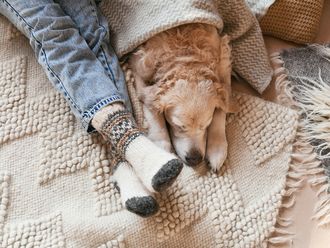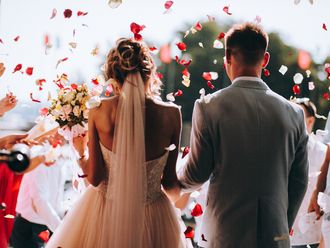
A rebel, unconventional, an artist, a free-spirited wanderer – if any of these terms describe you, then the interior style that suits your character may be Boho-chic Defined by carefree layers of patterns, natural textures and colours with lots of pieces with rich stories behind them, the style was the pride of groups of musicians, writers, artists, journalists and more back in the 1950s, 1960s and onwards.
Wait, isn’t Bohemia a place? Yes, it is a region in present-day Czech Republic, that actually became the source of the name based on a mistake. In 18th century France, Romani people who originated from northern India and had migrated centuries ago were thought to be from Bohemia, and were called ‘Bohémien’ . They were migrants, travellers who lived in camps and caravans and a minority in France, where they were also known as ‘gypsies’. Over time, this idea of living unconventionally, changed the way the word was used to include artists and writers – who were seen as literary bohémiens .
Antara Roy, a Dubai-based interior designer explains, “It basically started from people who are like nomads, artists, writers who valued creativity more than money. They would make do with a life where they would get knick-knacks from here and there – memoirs from travels, things like that, and put it all together. They were also rebels in their own way... not conformed to society.

It basically started from people who are like nomads, artists, writers who valued creativity more than money. They would make do with a life where they would get knick-knacks from here and there – memoirs from travels, things like that, and put it all together. They were also rebels in their own way....

“That’s how this sort of Boho interior trend started, because it was a bit of mix and match of everything put together.”
This idea spread across the Atlantic, and took home in the US as well – where in areas such as New York’s famed Greenwich Village, abode of artists, rebels and cultural provocateurs of the time, it grew roots. Whether through rock classics such as ‘Bohemian Rhapsody’, or other art forms, as during 50 years ago – the word still globally means those who are a bit of a rebel, wanderers, those who live away from materialism for the sake of arts and culture.
The Boho rulebook
Now, before we go into the specific design elements to make the perfect Boho look, let’s set the ground rules that will make the process easy for you.
Firstly, Roy says, “The basic rule of boho is that there’s no rule. It’s just to do whatever that makes it all aesthetically pleasing together.”
Secondly, Boho is known for being a mix of old and new, so vintage items, flea markets and family heirlooms are your best friends when setting out to achieve this style.
Thirdly, and quite importantly – the style has a lot to do with stories of you and your family, stories that represent your life. So collect memoirs from childhood, your hometown or your travels with history behind them, so that when they’re all in your home, it is an authentic, no-filter haven for you.
Finally, in Boho-style decor, more is more. Roy says, “In Boho, more is more, so you don’t have to be worried about having too much – it’s okay to have too much, you just have to mix and match different things from all these places and put them together.” You have full reins for it to be a riotous mix of colour and pattern in any way you wish.
According to Roy, there are two types of Boho styles:
1. Loud Boho: This is where you go a bit all out - with loud contrasting colours and patterns, eclectic furniture and more. She says, “You use very loud colours, like emerald greens, oranges, Prussian blues.”
2. Neutral Boho: This is the other end of the spectrum, with more sober colours like neutrals and beige. Roy says, “You can do sober colours like neutral palettes, such as white, beige, brown tones, terracotta colours, those are more like neutral palette colors to achieve a boho look.”
She also cites Indian designer Sabyasachi Mukherjee’s stores as another good example, with its ornate, vintage pieces and profusion of Indian cultural patterns.
Getting to your warmly snug Boho home
If this path sounds appealing to you, here’s how to get the perfect Boho interiors:
1. Begin with a tale

“One thing which is very popular with boho is that everything doesn’t have to be off the shelf,” says Roy.
So, when buying furniture and décor as the first step, head to a flea market, vintage market or a collector’s store. Begin with finding pieces that appeal to you, pieces that ideally have stories behind them. Roy also recommends collecting your heirlooms as starting statement pieces for your Boho interior style - these can be everything from ornate picture frames, candelabra to wicker baskets and throws. She advises visiting open markets in various countries, adding, “The idea is to have things which feel very used, and feel very worn out, with its own charm. That's an old worldly charm. That's what makes it so beautiful.”
Here’s the best part – they don’t have to be expensive at all. Roy says, “if you go back to history and culture, the it was not all about money, it was all about what you could find in your resources, what you could pick from whatever little you had, based on what was the history behind the piece.

“Most of the pieces are picked up or sourced with a lot of thought behind it in terms of where it’s from, the history behind the piece.”
Roy herself has a beautiful wrought-iron lampshade she had brought from Malaysia, a beloved gramophone gifted as a heirloom from her grandparents, and a Salvador Dali ashtray from the Spanish surrealist artist that looks completely different when flipped to other side – things she considers collector’s items and decorates her home. Objects like an old family vase, a tapestry from your travels, and even artwork with collected stamps can work well. Roy adds that even old cushions that we may consider ugly, can be transformed by styling it into the room the right way.
Inspiration can come from unexpected pieces as well – such as military metal trunks, Roy tells us. She says, “If I take that as a reference, I can stack them together, and make that a coffee table, you know, or I can make it the centre table and put glass or a wooden base on top of it.” No rules.
2. Tippity-tap on wooden floors

Next, to begin from the edges of your home – your flooring for Boho style should ideally be wooden, Roy says. You can also use patterned tiles, such as pretty Turkish tiles in some areas.
That would set the base for all the layers of textures that will arrive. Roy says, “You would add a lot of layering on the wooden flooring as well. So, if I do a rug, I will do a rug on a rug as well. Even with a carpet, you can add a smaller carpet as well – for example, a Persian rug on top of a jute rug.”
As for the other outer edge, the ceilings, you can either leave them bare or create texture by adding wooden beams for example. Roy adds, “You can even you can even go a bit crazy and actually paint your ceiling a different color like a burnt orange to give it some sort of character.”
3. Jute, wicker, rattan… natural texture play

Things that are handmade, woven, made of neutral natural fibres such as rattan, wicker, jute – all of these work perfectly for this style, and help add layers of rustic warmth and texture to your space. These can be pretty rattan lights, wicket baskets, woven chairs and headboards and rugs. Macrame wall hangings are also a great example.
The same goes for furniture. Roy says, “Wood, natural wood, raw wood, the more rustic, the better, the more beaten down the better.”
4. Bold patterns and prints

In the 1950s and 1960s, a well-travelled person would often have beautiful collection of traditional prints from across the world – think Aztec print rugs, Iranian carpets. In the Boho style, these patterns and more such as Chevron are well-loved, for a cultural, traditional touch. Items like crochet cushions, macrame, cushions with fringes, tassels and lush throws are some ways these patterns can be expressed in your space.
Roy says, “The Ikat pattern as well – it is a very popular pattern used in all bags, shoes, clothes.” A cultural touch can also be seen in artwork, says Roy, adding that it can be bold, loud, fun and a patterned focal point in the room.
What about curtains? Roy says, “The drapery should be very flowy. You can even have jute curtains, bright colours, or even something like shirt fabric or textiles lying around, that is then sewn together.”
5. Layers, layers and more layers

No, this is not about how to best combat wintry weather. What we mean is that in Boho-style, it’s all about looking cozy, snug and a little overdone. This means you can layer rugs on rugs, throws on throws and use an abundance of cushions.
Roy says, “There should be plenty of throws and pillows when you're doing the style.”
6. Bright shades of bohemian
The colour palette depends on if you’re doing a loud boho style or a neutral one. “Pinks, purples, amethysts, beige – yes, greens, oranges, blues, you know, you should go bright,” says Roy.
7. Laid-back lamps

Feel free to use a variety of light sources under the Boho style. Trailing bulb lights, lampshades, a floor lamp and more – it has to be layered and ambient. Roy says, “For example, different table lamps – these could be different shapes, different sizes, and can be put together. “
8. Boho loves biophilic

In other words, plants galore are the answer to everything. Have an empty space in a corner or by your sofa that looks a bit empty? Time to add a huge houseplant. Ceiling looking a bit bare? Add hanging plants in macrame holders or a creeper across your wall edges.
Roy says, “This style particularly includes a lot of plants, whether it's hanging plants, whether it's plants in a corner - a lot of natural greenery inside the space.“
Finally, you can also have a lot of books adorning various parts of your house – whether in built-in bookshelves, floating shelves or on various little tables around your home.
Boho No-nos
Even as Boho is all about being free-spirited, unconventional and informal – considering the 1950s – 1970s origin of the style, there are some things that don’t really fit into the style.
• Not streamlined, rather OTT or Over The Top
This means staying away from too much clean, streamlined lines of steel and glass, which can be seen in many modern homes.
Roy says, “There’s no clean design when you’re talking about Boho – as they say, it has to be a little bit OTT. It all has to very flowy and artsy, you know. The sofas don’t have to be straight, they can be at an angle, the chairs and sofas don’t have to mix and match each other. They can be totally contrasting to each other.”

Think living rooms are only for sofas and armchairs? Think again – you can have hanging chairs, beds, diwans and more. Another example is you would like to add a chandelier, it wouldn’t be too bright, shiny and glittery – but rather more rustic, such as one made of iron.
• No Neon
Although bright colours fit perfectly into the style, neon is a bit too much. Roy says, “Neon isn't a palette that was in that era at all.”
What should your final piece feel like? Utterly, unapologetically and boldly representative of you, in a warm, homey and rustic sense.















